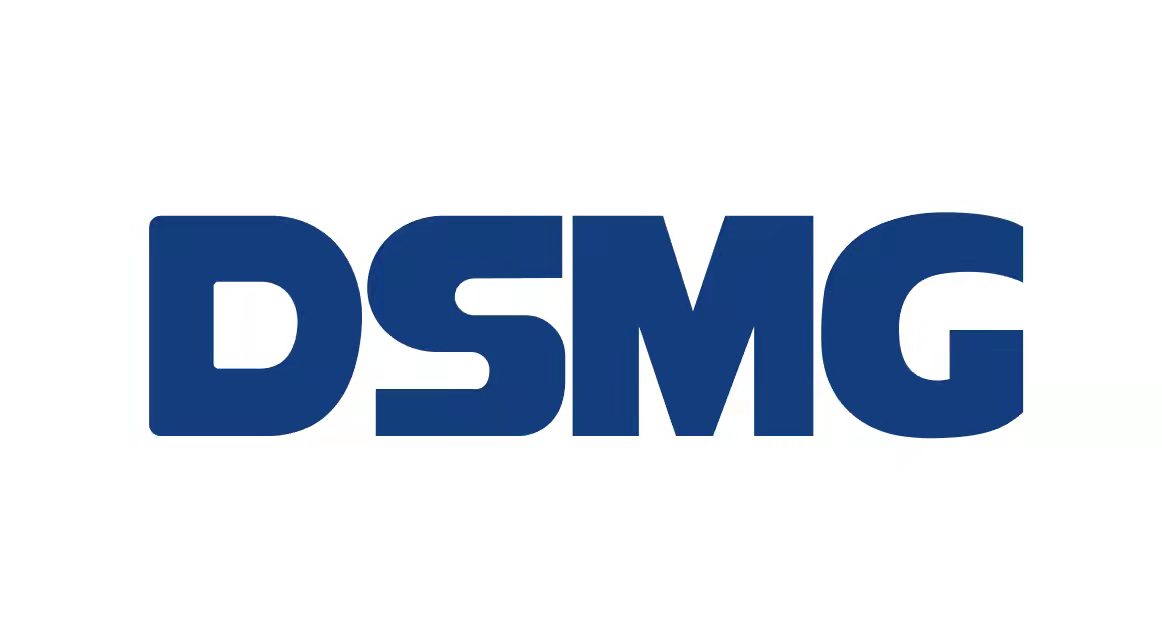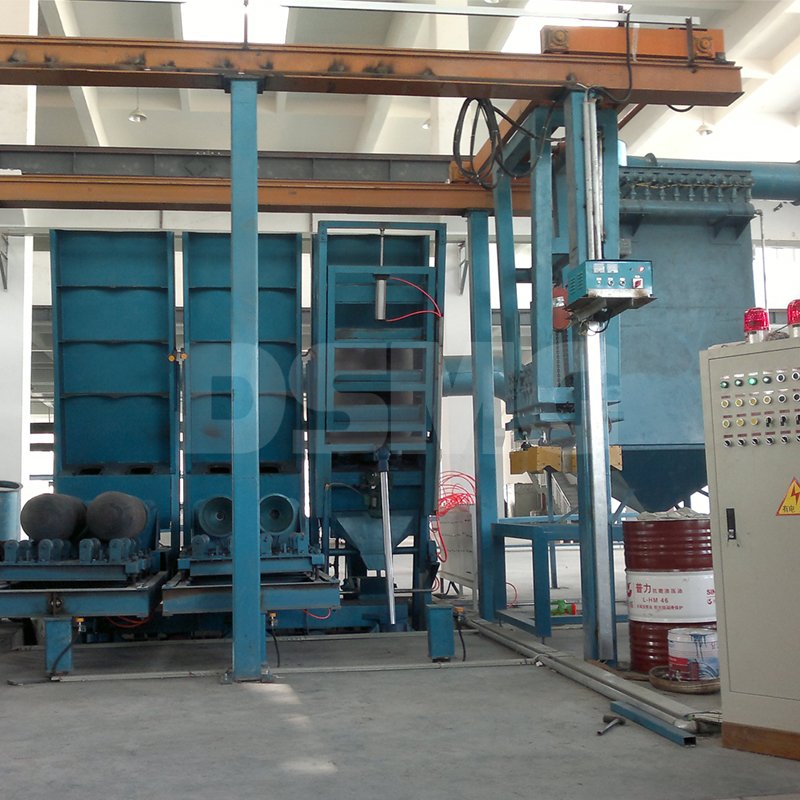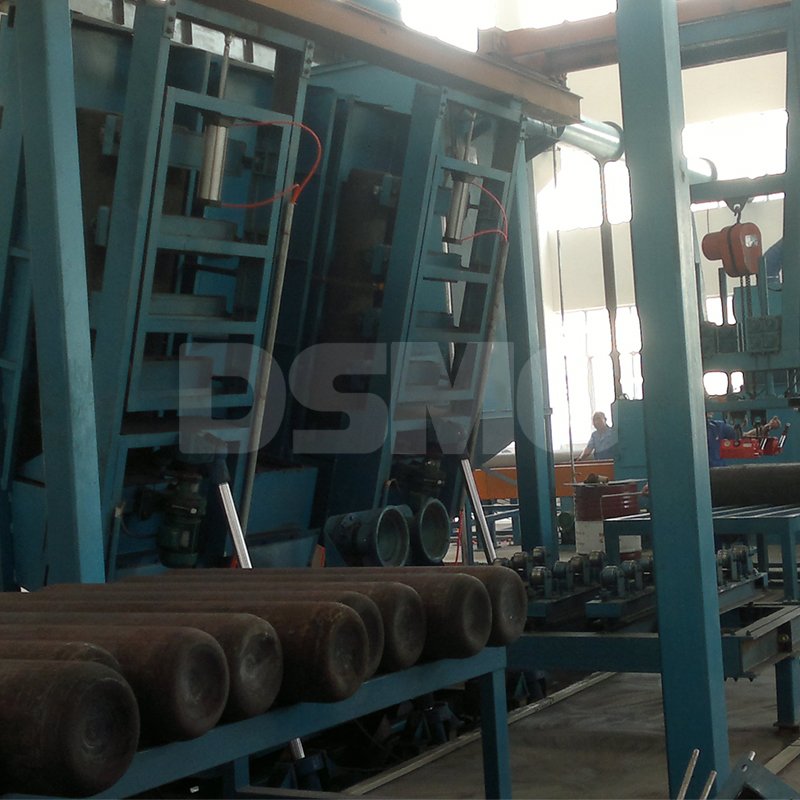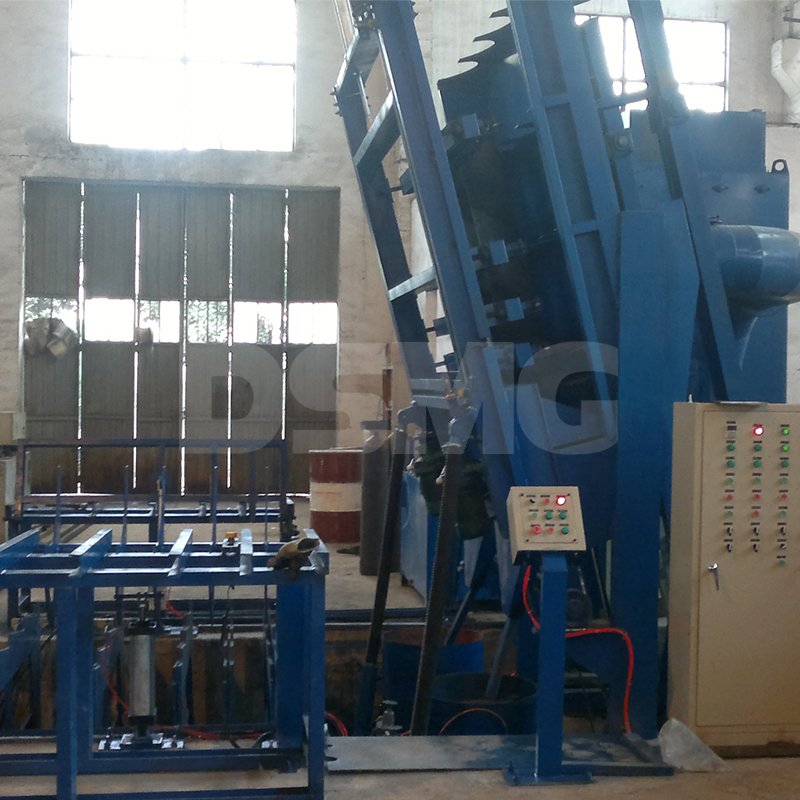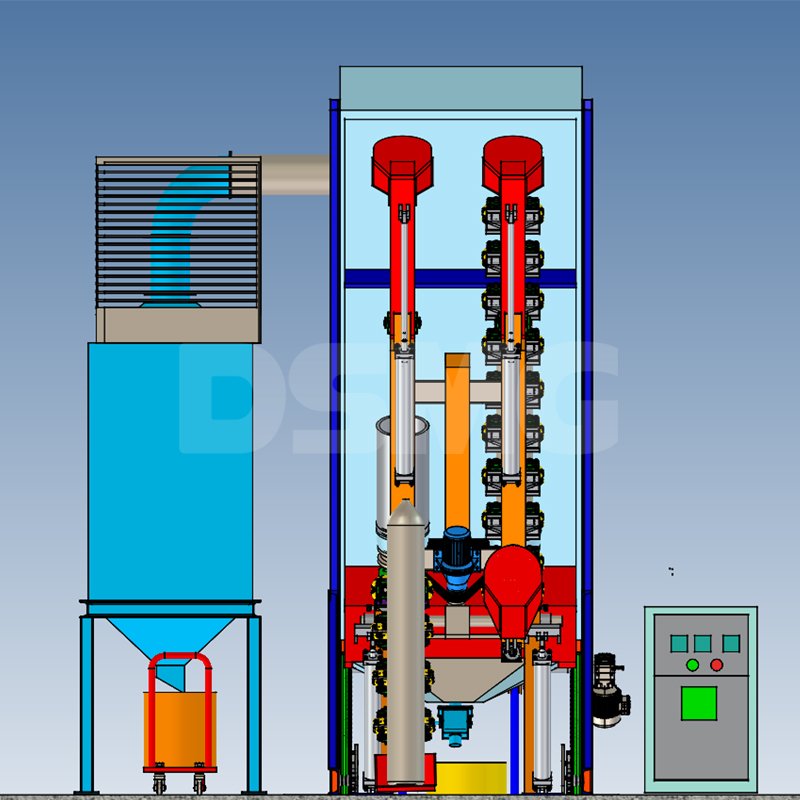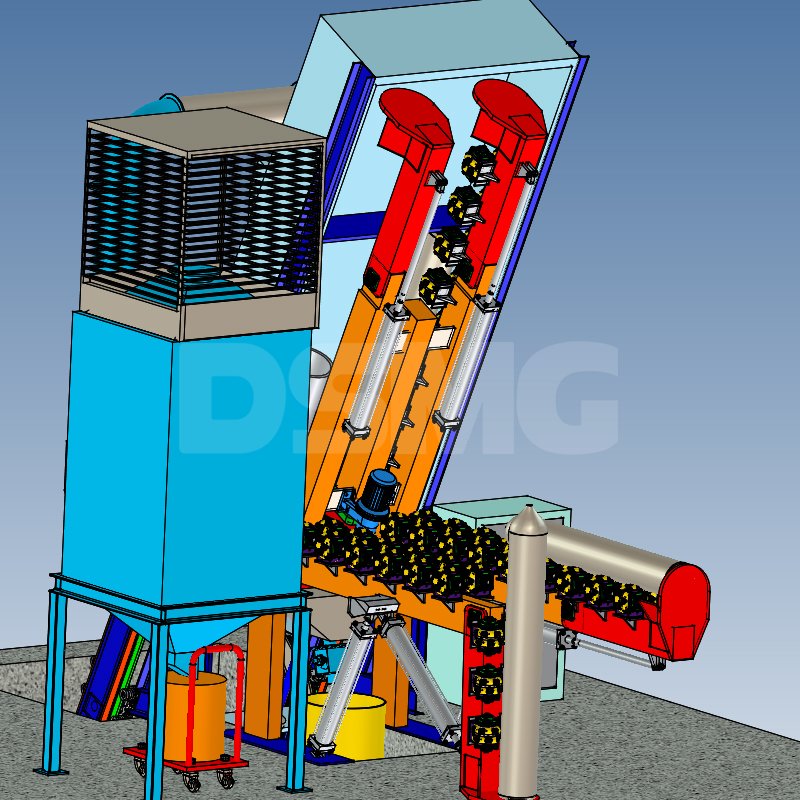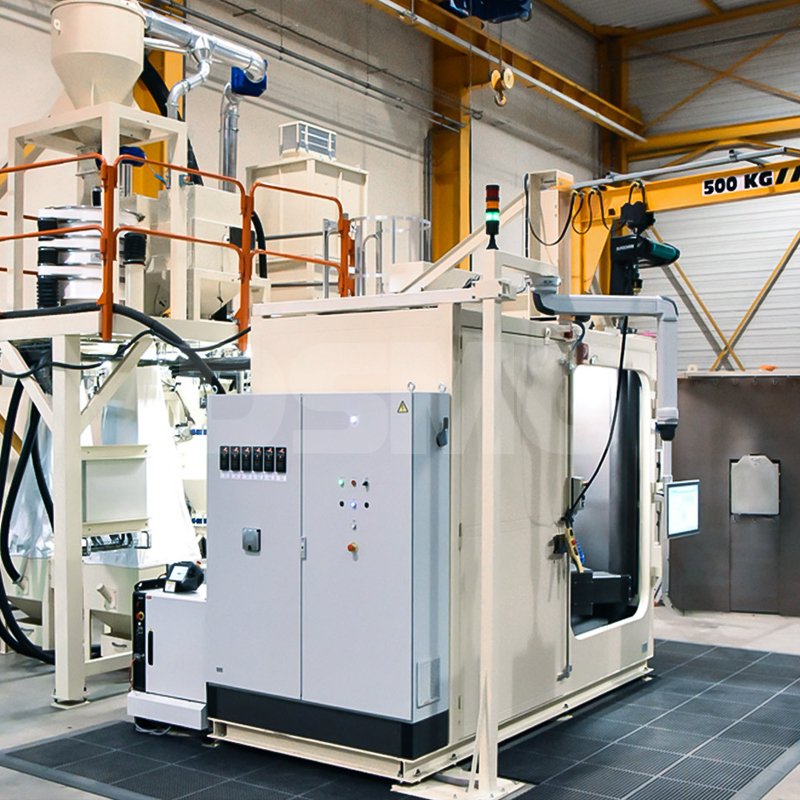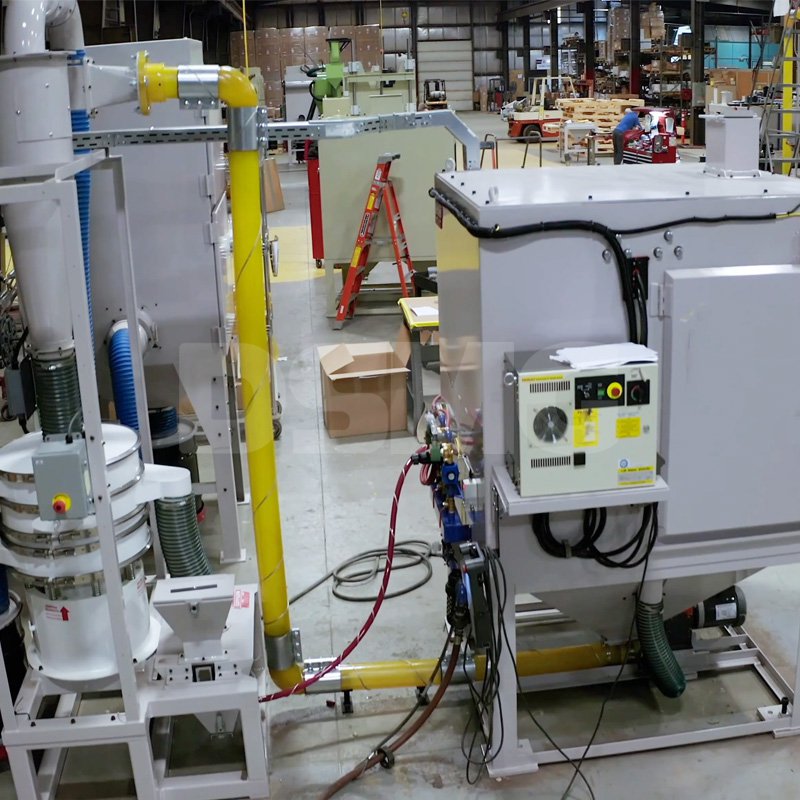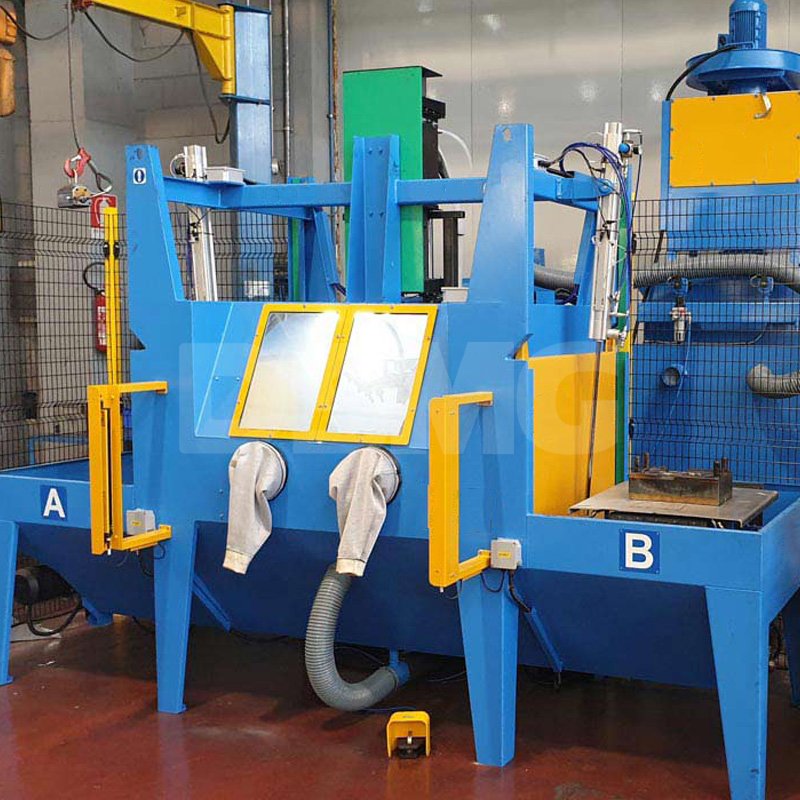Internal Shot Peening Machine for Gas Cylinder
The shot peening machine for the inner walls of gas cylinders is designed to pre-treat the internal surfaces before applying coatings. It is a highly productive automatic sandblasting device for the inner walls of steel cylinders and is mainly used for the internal sandblasting of small steel cylinders. This equipment can achieve the automatic loading and unloading of steel cylinders as well as the automatic shot blasting operation on the inner walls.
The inner walls shot peening machine for gas cylinders has two main stations, and each station can handle one workpiece. Firstly, the gas cylinders on the storage rack are pushed into the automatic loading position. Then, the cylinder clamping device will automatically clamp the workpiece tightly. When the steel cylinder is positioned in the spray gun chamber, the spray guns will automatically extend into their respective cylinders. The spray guns move up and down inside the chamber to complete the all-round spraying and cleaning of the inner walls of the cylinders. We use our specially designed sandblasting nozzles, which can perfectly sandblast the entire inner surface of the steel cylinder, covering the opening flange, the bottom cover, the side wall and the top cover.
After the sandblasting process is completed, the machine will automatically turn off the abrasive medium and use the same equipment to blow the remaining abrasive out of the steel cylinder. This unique design enables us to pre-treat the workpiece at just one station. By moving the sandblasting system out of the cleaned steel cylinder, the steel cylinder will automatically roll towards the unloading platform, thus realizing one working cycle.
This equipment is equipped with an automatic closed-loop recycling and recirculation system. It continuously recovers and cleans the sandblasting medium to ensure that only high-quality abrasives are returned to the system, while the unqualified abrasives will be collected in a powerful central filtering unit.
This device can be operated by one operator to achieve the highest production capacity. The machine is equipped with an intelligent panel management system, which enables the operator to use, control and maintain the machine very easily.
How does the Disa shotpeening machine complete the process of shot screening and separation?
The basic configuration starts with a 24-inch double-layer vibrating screen separator assembly, which is used for efficiently screening and separating used shots. The vibrating screen receives abrasives from the recycling system onto the top screening surface. Oversized abrasives and debris are captured by the top screen and conveyed to the waste container through the conduit hose. Reusable and undersized abrasives pass through the top screen and fall onto the bottom screen. Here, only the reusable abrasives are captured, and after separation, they are conveyed to the storage bin at the top of the double-chamber shot blasting machine. Undersized abrasives and fine powders pass through the bottom screen, fall onto the receiving tray, and are then conveyed to the waste container through the conduit hose.
Adopting a vertical spiral separator to achieve sorting of shot blasting media
When using spherical steel shots as shot blasting media, require synchronized control of the uniformity of steel shot particle size and shape integrity. Due to the ease of breakage of shot blasting media during operation, the vertical spiral separator uses a centrifugal separation mechanism to specially remove broken and non-circular media, ensuring stable media performance.
Working principle: The shot blasting media is injected into the separator from the top feed inlet, moving downward along the spiral track. The spherical steel shots, due to their rolling characteristics, quickly accelerate and are driven by centrifugal force to migrate to the outer edge; broken or non-circular steel shots, due to high friction, are retained on the inner side of the spiral track. Qualified steel shots (spherical) pass through the outer spiral track and are finally output from the bottom lateral discharge slot to the recovery device (such as a hoist). Invalid steel shots (non-circular/fragments) accumulate along the inner track, are discharged through the central discharge port at the bottom, and are concentrated for recovery.
The entire process relies on gravity and centrifugal force, without the need for additional power or maintenance; limited by the single-machine processing capacity, the sorting process usually runs in a bypass mode (non-mainstream continuous operation); in the bypass system, single-core or multi-core separation units can be configured to adapt to different production capacity requirements.
The basic configuration starts with a 24-inch double-layer vibrating screen separator assembly, which is used for efficiently screening and separating used shots. The vibrating screen receives abrasives from the recycling system onto the top screening surface. Oversized abrasives and debris are captured by the top screen and conveyed to the waste container through the conduit hose. Reusable and undersized abrasives pass through the top screen and fall onto the bottom screen. Here, only the reusable abrasives are captured, and after separation, they are conveyed to the storage bin at the top of the double-chamber shot blasting machine. Undersized abrasives and fine powders pass through the bottom screen, fall onto the receiving tray, and are then conveyed to the waste container through the conduit hose.
Adopting a vertical spiral separator to achieve sorting of shot blasting media
When using spherical steel shots as shot blasting media, require synchronized control of the uniformity of steel shot particle size and shape integrity. Due to the ease of breakage of shot blasting media during operation, the vertical spiral separator uses a centrifugal separation mechanism to specially remove broken and non-circular media, ensuring stable media performance.
Working principle: The shot blasting media is injected into the separator from the top feed inlet, moving downward along the spiral track. The spherical steel shots, due to their rolling characteristics, quickly accelerate and are driven by centrifugal force to migrate to the outer edge; broken or non-circular steel shots, due to high friction, are retained on the inner side of the spiral track. Qualified steel shots (spherical) pass through the outer spiral track and are finally output from the bottom lateral discharge slot to the recovery device (such as a hoist). Invalid steel shots (non-circular/fragments) accumulate along the inner track, are discharged through the central discharge port at the bottom, and are concentrated for recovery.
The entire process relies on gravity and centrifugal force, without the need for additional power or maintenance; limited by the single-machine processing capacity, the sorting process usually runs in a bypass mode (non-mainstream continuous operation); in the bypass system, single-core or multi-core separation units can be configured to adapt to different production capacity requirements.
 中文版
中文版